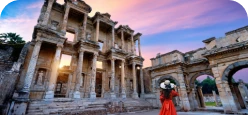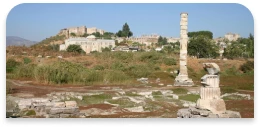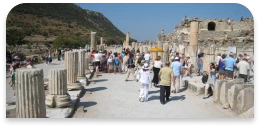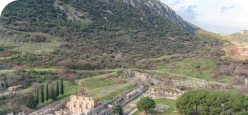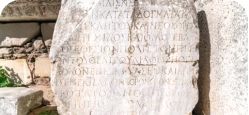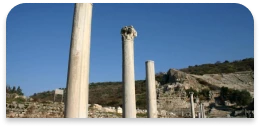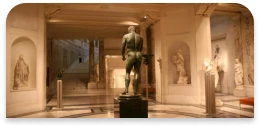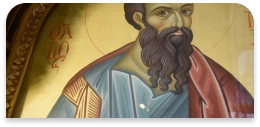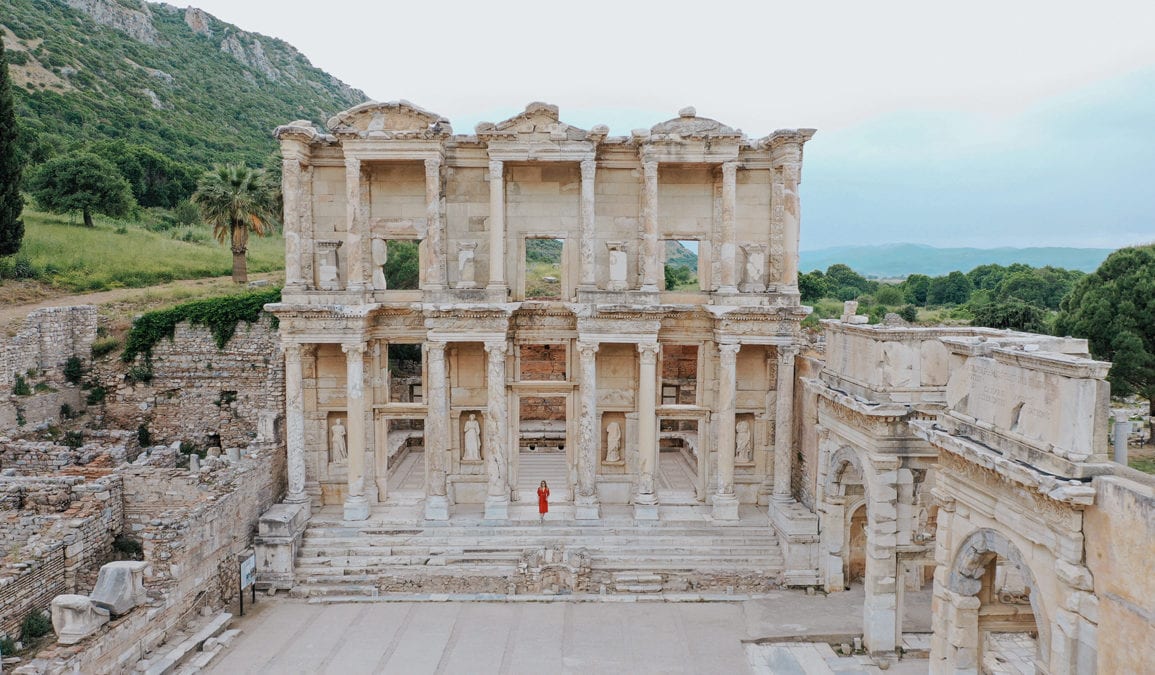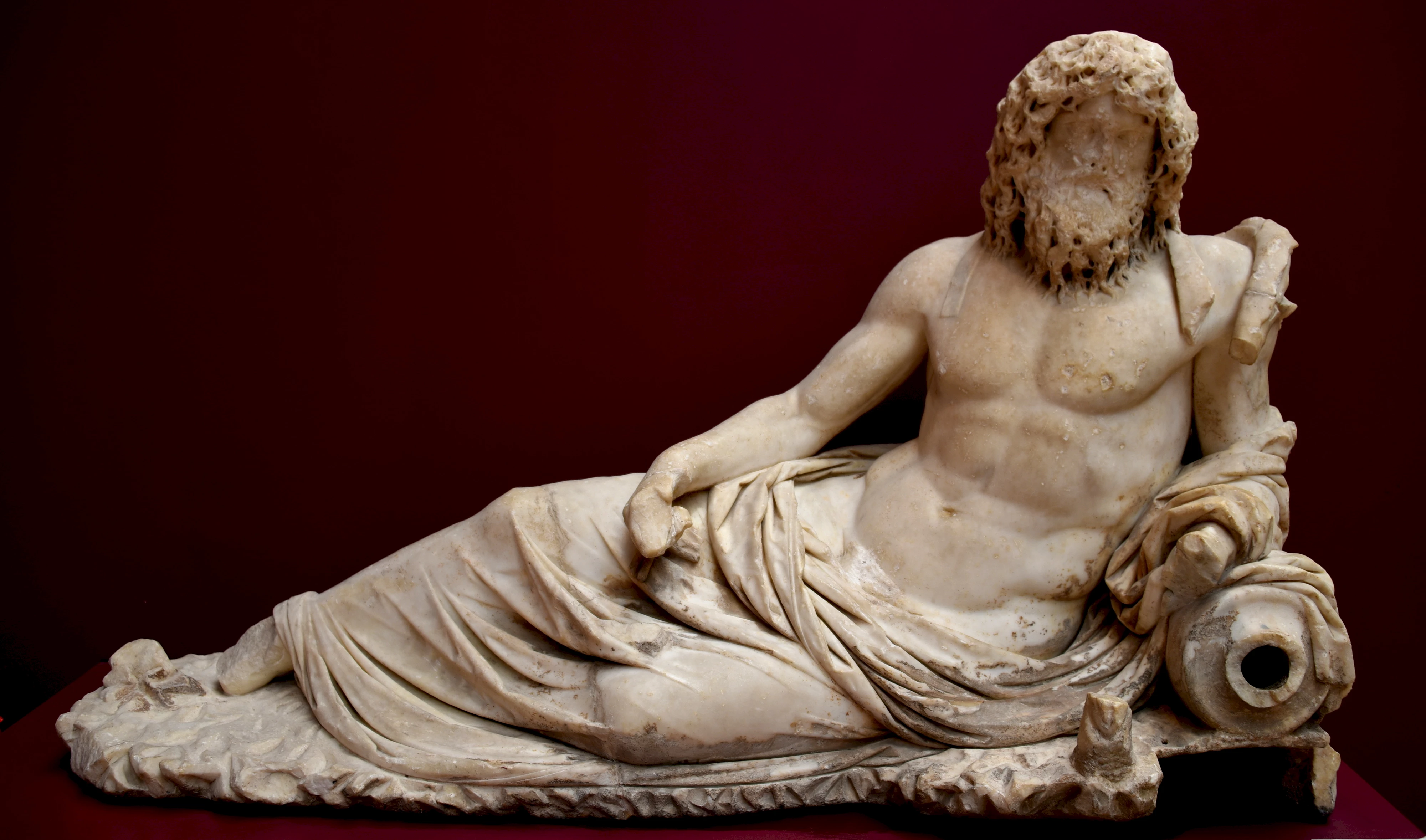State Agora
The agora on the southern part of the Basilica is the State Agora, and was built in the Roman Period in the first century B.C. This agora was used not for commerce but for business, it played an important role as a meeting place for the governmental discussions. During the excavations in the northeast corner of the Agora were found a great number of graves from the 7th-6th centuries B.C and a stone-paved road, and a archaic sarcophagus of terra cotta.

From this, it is understood that in the archaic period this part of the Agora was used as the necropolis of Ephesus. There is a water reservoir at the corner of the Agora, which played an important role in Ephesus. Its water was brought to the city through the Pollio Aqueduct, the remains of the Pollio Aqueduct can be seen 5 kilometers away, along the Selçuk-Aydin highway.
The agora is 160x73 meters, with stoas on three sides and a temple in the center, dating from the 1st century A.D The temple was dedicated to Isis, surrounded by ten columns on the long side and 6 on the short side. It was collapsed during the reign of Augustus and was not re-built again, as Emperor Augustus disliked anything Egyptian. On the facade of the Temple, there was a group of statues describing the legend of Odysseus and Polyphemos which are now displayed in the Ephesus Museum.
Private Ephesus Tour
%100 satisfaction guarantee

